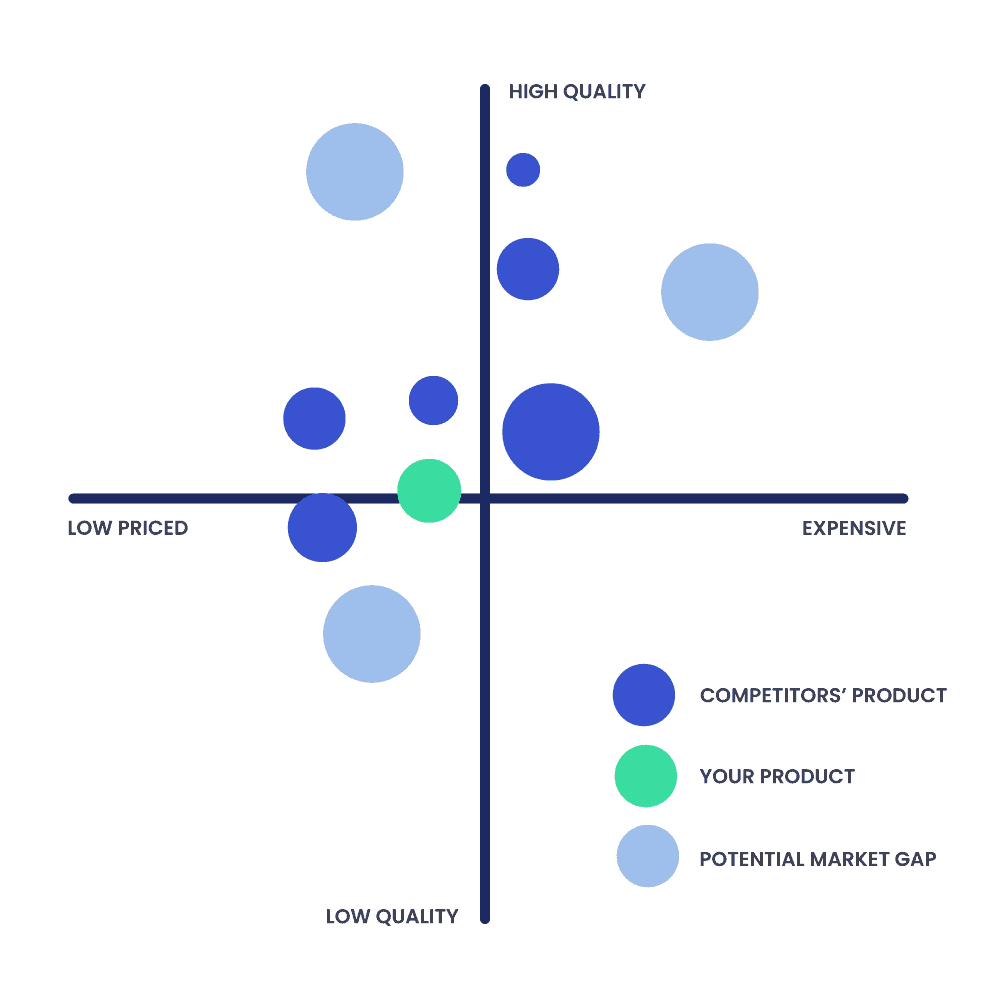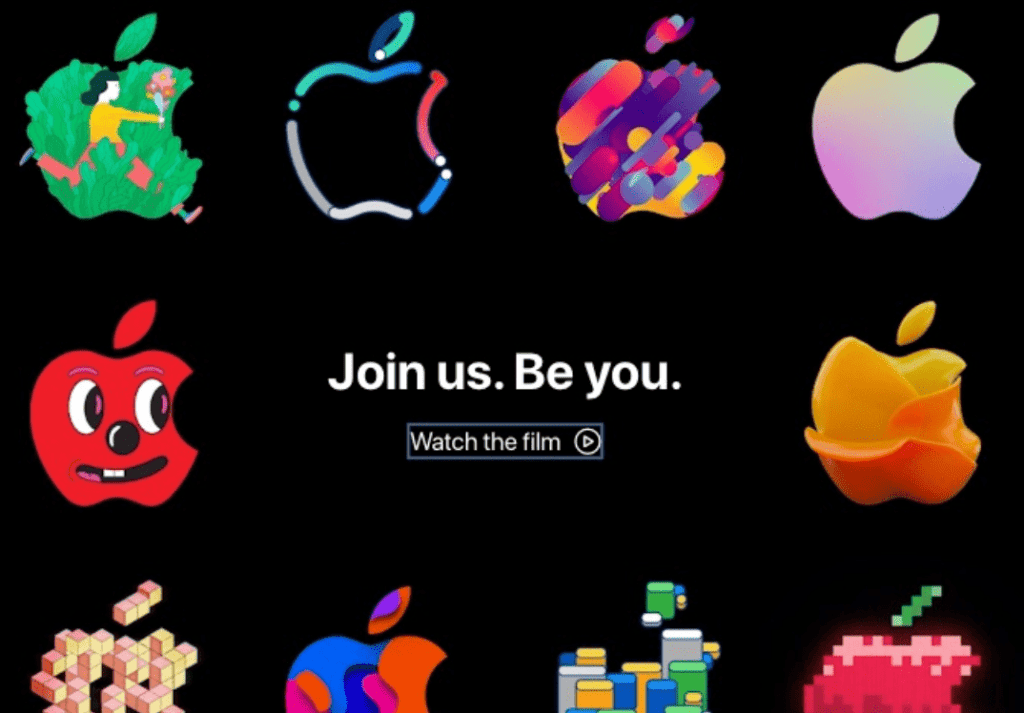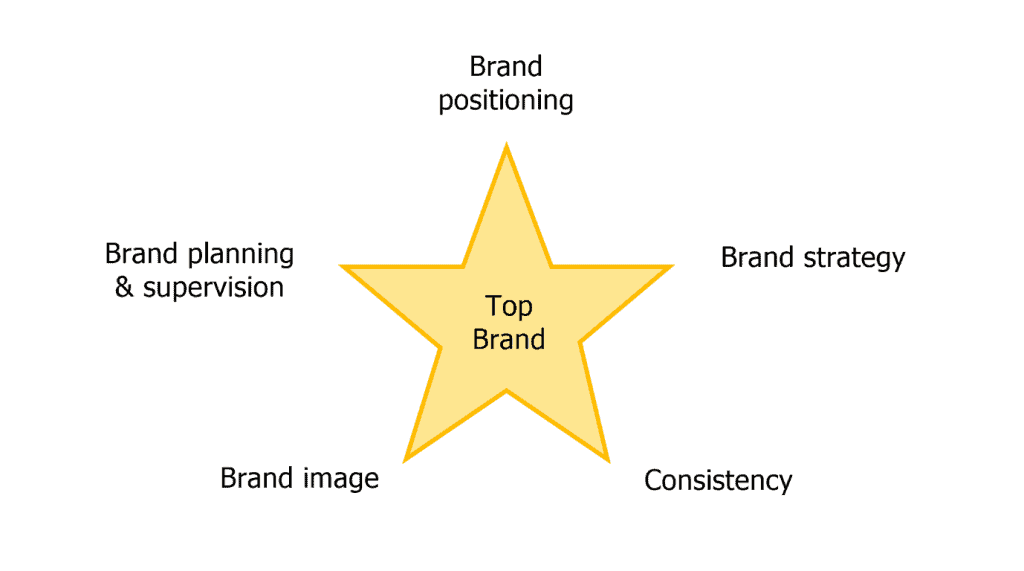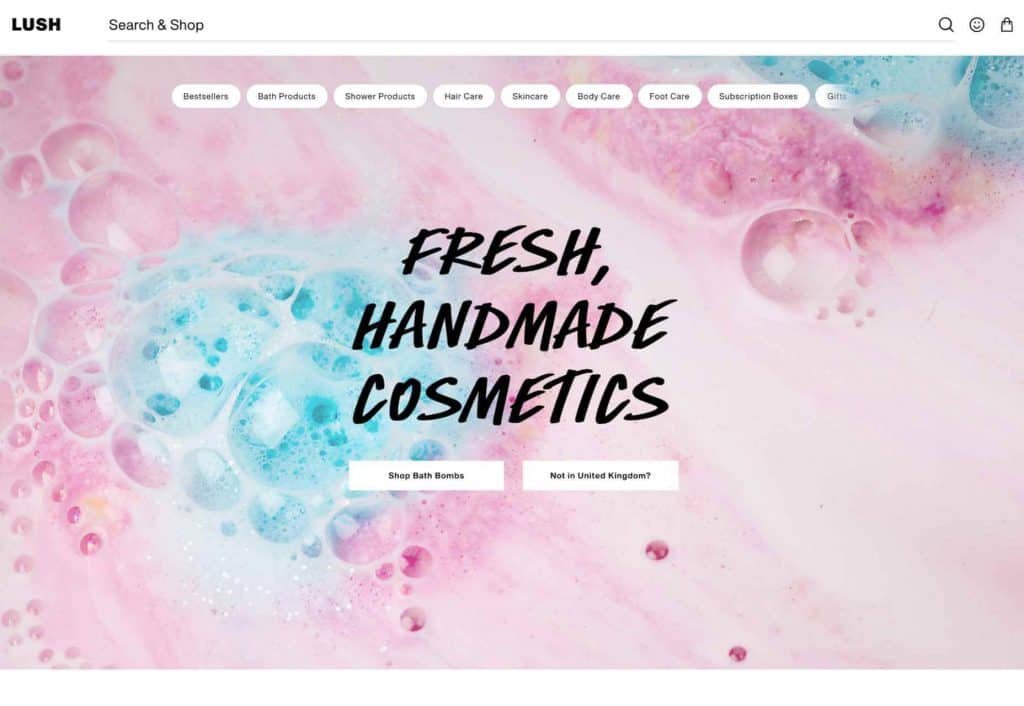Strategic Brand Positioning: Standing Out in a Crowded Market
The marketplace is noisy. Cramped. Cluttered. Just finding a spot on the shelf feels like a triumph these days. We're drowning in a sea of sameness, overwhelmed by an avalanche of average. In a world dominated by parity, how can your brand hope to stand out?
It starts with courage. The courage to zig when everyone else zags. To embrace what makes you different, not run from it. Your weirdness is your superpower—if you let it be. But blending in is always easier than standing out. Merging into the crowd feels safer than courting controversy. And so we hold back. We hedge. We get quieter when we should be getting louder.
The faint of heart need not apply here. This job is for the misfits, the troublemakers, the square pegs in round holes. If differentiation makes you nervous or scares you silly, you'd best look away. But if you're tired of being lost in a sea of sameness, sick of being safe and dull, then it's time to get dangerous. Let your freak flag fly. Celebrate what sets you apart. The marketplace may seem crowded, but there's always room for those courageous enough to stand.
Your brand has a choice. Play it safe and blend in, or embrace your inner rebel and boldly stand out. The risks are real, but so is the reward—for those willing to take it. What's it going to be?
Table of Contents
What Is Brand Positioning and Why Does It Matter?

Brand positioning refers to how a brand is perceived relative to competitors in customers' minds. It encompasses factors like:
- Key benefits offered
- Target audience
- Personality and values
- Affordability
- Quality and features
In essence, brand positioning is about carving out a distinctive space in a crowded market so people understand what makes your offering unique and appealing. It's about owning a position that potential customers immediately associate with your brand.
Getting brand positioning right delivers tremendous advantages, including:
- Increased brand awareness and recall – A strong position makes you more visible and memorable amidst the noise.
- Clearer customer decision-making – Removing confusion helps customers choose your brand.
- Standing out from competitors – Differentiation makes you less interchangeable.
- Premium pricing opportunities – Customers pay more for brands they perceive as superior.
- Improved customer loyalty – Aligning with customer values fosters emotional bonds and repeat business.
For startups and small companies, positioning is incredibly crucial. The most brilliant product in the world will fail if no one understands why they should buy it over alternatives. Thoughtful positioning provides that clarity.
Examining the Key Principles of Strategic Brand Positioning

Many factors determine how brands are positioned—from product attributes to brand personality to target demographics. However, several core principles tend to drive effective positioning:
Focus on Solving Real Customer Problems
At its heart, positioning is about framing your brand as the answer to your audience's needs or desires. Everything else builds off this foundation. Ask questions like:
- What meaningful problems does my product solve?
- What are customers really looking for? How can we deliver that value?
- How does our solution make life easier?
When positioned around genuine customer problems, brands resonate more deeply.
Emphasise Your Differentiators
In crowded markets, brands struggle to highlight differences that give them an edge. Factors that separate you could include:
- Unique product features or proprietary technologies
- Superior quality, performance, or design
- Better value proposition (ex. lower cost)
- Brand personality and style
- Core values and company mission
Leverage points of differentiation to stand apart. But choose attributes aligned with what target customers care about.
Pick a Specific Target Audience
Trying to be everything for everyone almost always backfires. The most effective positioning targets a well-defined target audience. Ask questions like:
- Who are our best potential customers?
- What specific needs do they have? What do they value?
- How are they different from other segments?
- Why should these customers buy from us vs. anyone else?
Sharply defining your target audience allows more tailored messaging.
Align With Customer Values and Motivations
Today's consumers favour brands that share their values and priorities. Positioning works best when grounded in customer motives like:
- Achievement, mastery, and growth
- Creative self-expression
- Independence, freedom, and control
- Security, stability, and comfort
- Social connections and community
- Sustainability and social responsibility
Connect positioning to the deepest customer values for maximum resonance.
Convey Brand Personality and Emotion
Rational product attributes are insufficient on their own. Brand positioning also requires personality and emotional appeal. Think about:
- What personality traits or qualities represent our brand?
- What emotions do we evoke in customers? (Ex. excitement, joy, confidence)
- How do we want customers to feel when engaging with our brand?
Branded content and messaging should reinforce positioning through emotion and storytelling.
Conducting Research to Inform Brand Positioning Strategy

Data, insights, and research are mission-critical for positioning success. Useful methods include:
Customer Interviews and Surveys
Directly ask target customers:
- What brands do you currently use and why?
- How would you describe our brand versus competitors?
- What matters to you in this product category?
- What emotions and values do you associate with our brand?
Their responses help identify gaps between actual vs. desired perceptions.
Competitor Analysis
Study how competitors position themselves through messaging, branding, and customer engagement. Look for unoccupied spaces in the market.
Also, analyse indirect competitors providing alternative solutions. What advantages or angles could we leverage over them?
Market Segmentation Analysis
Look for gaps or underserved segments using psychographic and demographic data—position against the least contested segments for built-in differentiation.
Brand Associations Map
Visually map what attributes and associations people connect to your brand. Look for misalignments with positioning goals to address through messaging. Track over time.
Social Listening
Monitor social media conversations for real-time insight into brand associations, evaluations and comparisons. Listen for new opportunities.
Research continually informs strategy. Regularly update positioning as markets shift and evolve.
Common Brand Positioning Strategies and Examples

Many classic positioning frameworks exist. Some of the most popular include:
Low-Cost Provider
Offer greater affordability without sacrificing quality.
Examples*: JetBlue, IKEA, Walmart*
Premium Player
Justify higher prices through top-tier quality, status, and aspiration.
Examples*: Mercedes, Apple, Tiffany & Co.*
Innovator or Tech Leader
Known for cutting-edge innovation and technological superiority.
Examples*: Tesla, Samsung, Amazon Alexa*
Design and User Experience Focus
Stand out through exceptional design, user experience, and aesthetics.
Examples*: Apple, Sonos, Peloton*
Quality and Reliability
Position around product durability, reliability, precision, and consistency.
Examples*: Toyota, Rolex, Intel*
Friend of the Customer
Build brand identity around excellent service, support, and customer satisfaction.
Examples*: Zappos, Ritz-Carlton, Nordstrom*
Convenience and Efficiency
Make customers' lives easier through seamless, frictionless experiences.
Examples*: Amazon Prime, Uber, Netflix*
Purpose and Cause Driven
Promote social missions and causes aligned with customer values.
Examples*: Toms Shoes, Patagonia, Ben & Jerry's*
Small-Batch Artisan
Position around small-scale craftsmanship, care, and attention to detail.
Examples*: Blue Bottle Coffee, Warby Parker, Shinola*
The best positioning balances clarity with flexibility to adapt. Stake out brand territory that is defensible for the long term.
Turning Brand Positioning Into Messaging and Content

Bringing positioning to life requires translating core concepts into consistent branding, messaging, content, and experiences. Ways to reinforce positioning include:
Succinct Brand Taglines
Memorable short phrases that evoke your positioning. For example:
- DeBeers: “A Diamond Is Forever”
- Nike: “Just Do It”
- Apple: “Think Different”
Paid and Owned Advertising
Digital ads, commercials, direct mail, and other paid media creatives should align with positioning. Owned channels like social pages and websites also play a crucial role.
Branded Content and Storytelling
Blogs, videos, podcasts and other content are powerful platforms for telling brand stories through the lens of positioning.
Spokespeople and Influencers
Enlist internal executives and external partners like celebrity sponsors and influencers to embody and promote your brand position.
Brand Imagery and Visual Identity
Photography, logo, fonts, colours and other visual branding elements express the brand positioning.
Product Packaging and Retail Environments
Provide physical touchpoints that reinforce what the brand stands for at retail and point of purchase.
Customer Experience and Service
Interactions with sales, service and support teams bring the brand position to life through human engagement.
With unified implementation across touchpoints, brand positioning truly takes hold.
Tracking Brand Positioning Success and Results
Like any strategy, positioning requires measurement and refinement. Key performance indicators (KPIs) to monitor progress include:
- Brand awareness and attributes – Mindshare, perceptions, associations
- Consideration and preference – Percentage who would consider/prefer your brand
- Conversion and sales – Purchase behaviour and sales growth
- Loyalty and advocacy – Retention, referrals, share of wallet
- Competitor benchmarking – Compare against key player brands on relevant metrics
- Marketing cost efficiency – Return on positioning investment tied to marketing expenses
- Qualitative feedback – Social listening, reviews, customer interviews
Assess quantitative and qualitative data to gauge effectiveness and identify potential positioning gaps. Be ready to evolve and adjust as needed quickly.
Common Positioning Mistakes to Avoid
While powerful when done well, many brands still flounder with positioning. Common pitfalls include:
Trying to Appeal to Everyone
Resist broad positioning without differentiation. Spreading focus dilutes impact.
Copying Competitors
Mindlessly chasing successful brands marginalises your positioning. Lead, don't follow.
Relying Solely on Product Attributes
Don't take a purely functional approach. Emotional resonance matters.
Sticking to Outdated Positioning
Markets shift. Brands must be agile and responsive in pivoting.
Inconsistent Messaging
Misaligned branding undercuts positioning. Tighten up execution.
Ignoring the Customer Perspective
Assumptions rather than actual perceptions lead brands astray. Do the research.
Avoid these traps through rigorous positioning strategies that balance customer insights with business impact.
Frequently Asked Questions (FAQ) About Strategic Brand Positioning
What are some tips for writing brand positioning statements?
Please keep it simple, clear, and concise
Focus on the target customer
Highlight your brand's differentiation and competitive advantage
Use vivid, emotive language that paints a picture
Align with the brand vision and business objectives
Give customers a reason to believe and connect
How often should you revisit brand positioning?
Brand positioning should be reevaluated at least every 2-3 years, if not more frequently. As markets and customer preferences change, brand positioning may need to adapt or risk becoming stale. Conduct ongoing research, adjust messaging, and refresh positioning to stay competitive.
Can you change brand positioning?
Yes, brands can change their positioning over time. Examples like Burberry and Old Spice show that remarkable repositioning is possible. That said, pivots require careful strategy and execution or risk confusing customers. Evolve positioning gradually while retaining brand equity.
How do you promote and communicate brand positioning?
Consistent communication of brand positioning requires conveying it through all brand touchpoints. This includes marketing campaigns, advertising, website, social media, PR, packaging, staff training, customer service interactions and more. Repeated exposure cements positioning perception.
How do you measure the success of brand positioning?
Key performance indicators to gauge brand positioning success include brand awareness, consideration, preference, conversions/sales, customer retention and loyalty. Compare against competitors. Survey customers on brand perceptions and track growth on associated attributes. Treat positioning as an ongoing optimisation effort.
Conclusion and Final Thoughts
In today's crowded marketplace, brands cannot thrive without carving out a distinct, valued position. Strategic brand positioning provides that all-important differentiation. It transforms brands from generic offerings into meaningful solutions that connect with what people care about.
But positioning cannot be an afterthought. It requires deep customer understanding, competitive vigilance and consistent execution. With deliberate positioning, brands become recognised, valued partners that improve people's lives. They gain both market share and share of heart.
In business and life, you get back what you put in. Thoughtful positioning creates clarity for customers while propelling companies to new heights. By dedicating ourselves to meaningful positions, we all win.
